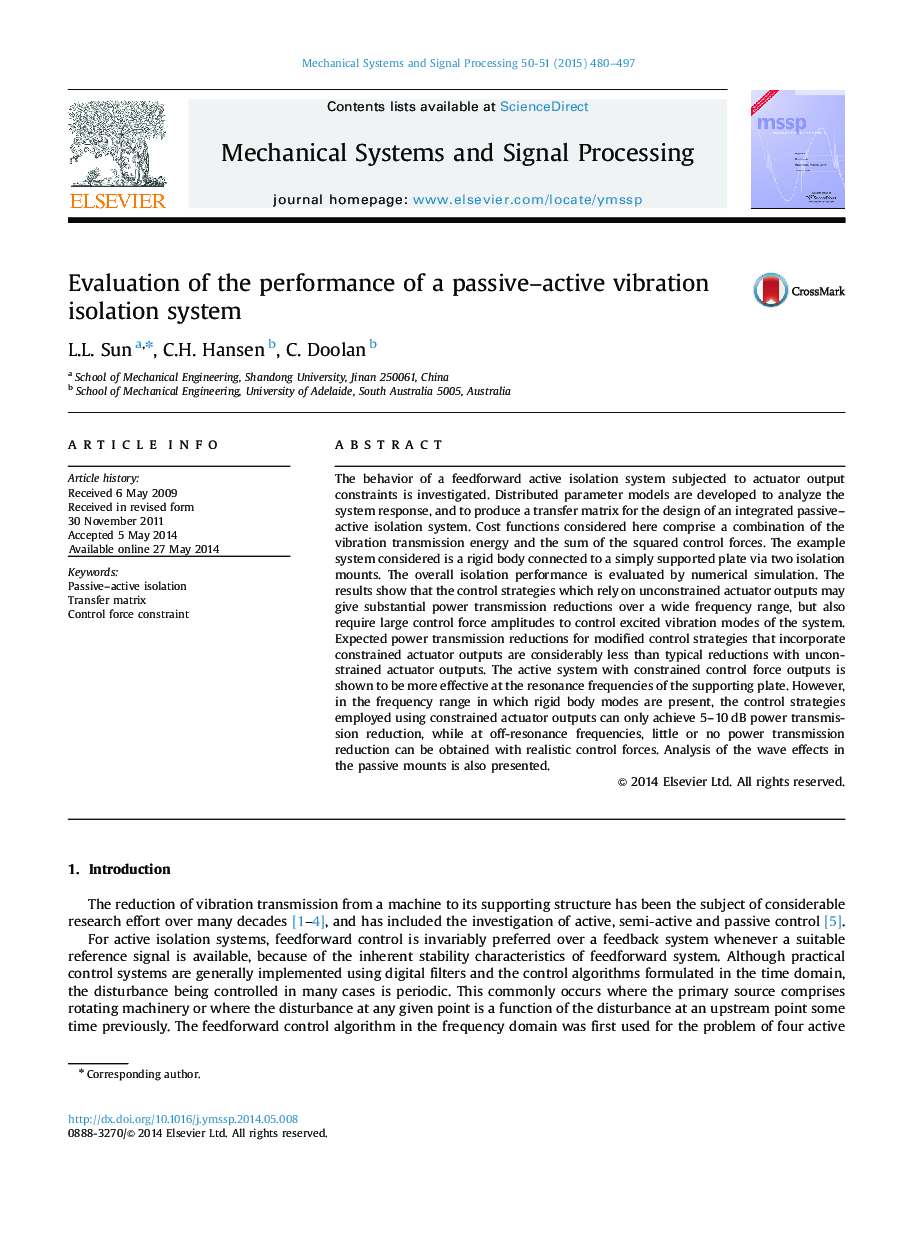| Article ID | Journal | Published Year | Pages | File Type |
|---|---|---|---|---|
| 560246 | Mechanical Systems and Signal Processing | 2015 | 18 Pages |
•Effects of actuator output constraints on feed-forward active isolation systems.•Modified cost functions are proposed to limit control force magnitudes.•Maximum control force is required at frequency corresponding to rigid body mode.•Constrained control systems can only achieve 5-10 dB power flow reductions.
The behavior of a feedforward active isolation system subjected to actuator output constraints is investigated. Distributed parameter models are developed to analyze the system response, and to produce a transfer matrix for the design of an integrated passive–active isolation system. Cost functions considered here comprise a combination of the vibration transmission energy and the sum of the squared control forces. The example system considered is a rigid body connected to a simply supported plate via two isolation mounts. The overall isolation performance is evaluated by numerical simulation. The results show that the control strategies which rely on unconstrained actuator outputs may give substantial power transmission reductions over a wide frequency range, but also require large control force amplitudes to control excited vibration modes of the system. Expected power transmission reductions for modified control strategies that incorporate constrained actuator outputs are considerably less than typical reductions with unconstrained actuator outputs. The active system with constrained control force outputs is shown to be more effective at the resonance frequencies of the supporting plate. However, in the frequency range in which rigid body modes are present, the control strategies employed using constrained actuator outputs can only achieve 5–10 dB power transmission reduction, while at off-resonance frequencies, little or no power transmission reduction can be obtained with realistic control forces. Analysis of the wave effects in the passive mounts is also presented.
